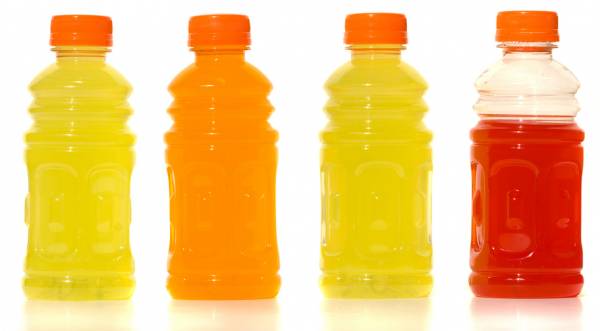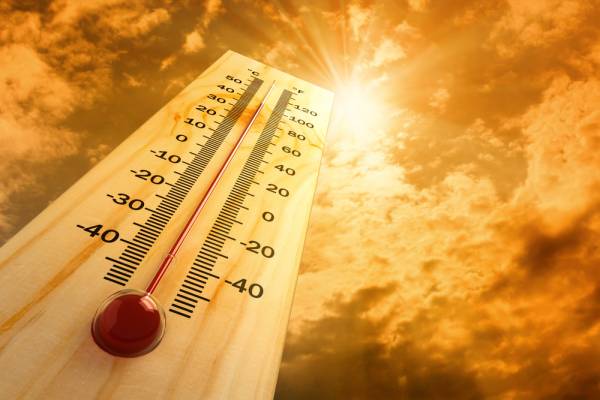The importance of hydration for good health and properly functioning body systems cannot be overstated. As the warmer months approach and outdoor activities increase, special attention needs to be given to proper hydration and to the prevention of heat illnesses for all, but especially for young athletes.
Because the body cannot store water, we must constantly provide and supply it with water to maintain our body’s many functioning systems. While water contains zero calories, it is considered a nutrient, comprising 55-70% of our body’s composition.
Acting as a cooling agent for our body, water is also essential for all major bodily functions, to include:
- Maintaining the health and integrity of every cell in the body
- Aiding in blood circulation
- Carrying nutrients and oxygen to cells
- Helping to eliminate the byproducts of the body’s metabolism
- Regulating body temperature through sweating
- Moisturizing the skin
- Moistening mucous membranes
- Lubricating and cushioning joints
- Aiding in digestion
- Helping convert food to energy
- Helping the body absorb nutrients
- Protecting and cushioning vital organs
- Removing waste
Contrary to popular belief, simply drinking water when you are thirsty is not good advice when it comes to properly hydrating the body. When the thirst mechanism activates, it is usually a sign the body is already under hydrated (and possibly headed toward dehydration). At this point, the body has to catch up to function properly.
How Much Water Is Enough?
So, how much water should young athletes drink? The answer is – it depends. Water intake is based on several variables, and even within that set, will vary according to the needs of the individual. General considerations of hydration might be based on the length of the activity, environmental conditions such as heat and humidity, the length and intensity of the practice or game, and additional gear the athlete may be wearing, such as football or hockey gear.
While considering some of the environmental factors of hydration, consideration must be given to the individual needs of the athlete, such as the weight and age of the athlete, the intensity level at which the athlete trains or plays, the current physical conditioning of the athlete, and the current hydration level of the athlete. The American College of Sports Medicine (ACSM) recommends drinking four to eight ounces of water every fifteen to twenty minutes of exercise as a good starting point for hydrating athletes.
The ACSM provides the following guidelines for the maintenance of optimal hydration:
- Before Exercise: 16-20 ounces within the two-hour period prior to exercise.
- During Exercise: 4-8 ounces every 15-20 minutes during exercise.
- Post Exercise: Replace 24 ounces for every one pound of body weight lost during exercise.
Water vs. Sports Drink
While the purpose of this article is water hydration, there is a time and place for sports drinks. Electrolytes found in sports drinks can be beneficial in regulating nerve and muscle function and replacing electrolytes lost through sweat. For adolescent athletes enduring physical activity for more than sixty to ninety minutes at a time, or for young athletes who practice in high heat and humidity, sports drinks can be beneficial in replenishing lost nutrients. The bottom line, however, is that water (pure water) is essential for an athlete to perform optimally.

Many times I hear that young athletes refuse to drink water, preferring sports drinks instead, and I am asked for suggestions to help resolve this issue. I offer this:
- Do not buy sugary sports drinks.
- Place water on the table at every meal.
- Cut up fruit and place in the water to help flavor it.
- Use refillable water bottles to measure daily water intake.
- Have the athlete carry a water bottle to school and to practice.
For coaches and trainers, I offer this: make it mandatory that your athletes have at least 32 ounces of water at every practice or game (or as weather conditions dictate), as well as have a cooler of water readily available to your athletes.
Signs of Dehydration
When speaking of hydration, parents, coaches, and trainers must also be aware of, and be able to recognize, the signs of dehydration. Dehydration is serious and can lead to a potentially life-threatening emergency. As an athlete becomes dehydrated, heart rate increases, blood flow to the skin decreases, and body temperature can rise to dangerous levels. Signs of dehydration include:
- Dry lips and tongue
- Sunken eyes
- Bright colored or dark urine, or urine with a strong odor
- Infrequent urination
- Small volume of urine
- Apathy or lack of energy
- Irritability
- Sudden decline in performance (strength, energy, coordination, decision making, etc.)
Heat Related Illnesses
As mentioned previously, one of the most important functions of water is to cool the body, especially during exercise. During exercise, the athlete’s muscles generate heat, which leads to increased body temperature. As this occurs, the body reacts by sweating. When sweat evaporates, the body cools. If the fluids lost through sweating are not replaced, the body cannot work properly to cool itself, leading to heat-related injuries or illness. There are several types of heat injury and illness that everyone should be aware of, especially the parents, coaches, and trainers of young athletes. Heat related illnesses are: heat cramps, heat exhaustion, and heat stroke.
Although heat cramps are the mildest form of heat injury, they are serious, and if not treated promptly, can lead to more severe problems. Heat exhaustion is more severe than heat cramps and occurs from a loss of water and salt in the body. This illness usually occurs under extreme heat conditions, intense and prolonged exercise without adequate fluid and salt replacement, and when the body is unable to cool itself properly. If left untreated, heat exhaustion can progress to heat stroke. Heat stroke, the most severe form of heat illness, occurs when the body can no longer cool itself and is overwhelmed by excessive heat. It is a life-threatening emergency and requires immediate medical attention.

Too Much Water?
Is it possible to hydrate too much? Yes. Drinking excessive amounts of water in a short period of time can lead to hyponatremia, also known as water intoxication. When excessive amounts of water are consumed, the sodium levels in the body become diluted, and the kidneys cannot excrete enough fluid. This causes the cells to become water logged and the brain to swell. This is a potentially life-threatening situation and requires immediate medical attention. Although hyponatremia is not common, everyone needs to be aware of it, as it is something that can easily be prevented.
The importance of proper hydration to a young athlete’s well-being can not be overstated. As we approach the fun of warmer weather activities, young athletes, parents, and coaches and trainers need to understand that proper hydration is crucial to optimal sports performance, as well as to the athlete’s health.
References:
1. Sawka MN, et al. “American College of Sports Medicine position stand. Exercise and fluid replacement.”.Med Science Sports Exercise 2007;39:377-390. Accessed May 3, 2014.
2. Deakin University, Australia. “ Water – A Vital Nutrient”. Accessed May 3, 2014.
3. Fitzgerald, M. “The New Rules of Hydration”. Active.com. Accessed May 3, 2014
4. Lutheran Children’s Hospital. “Hydration Tips for Young Athletes”. Accessed May 3, 2014.
Photos courtesy of Shutterstock.






